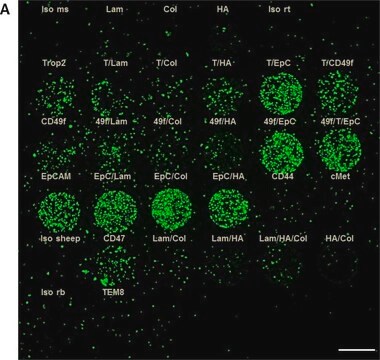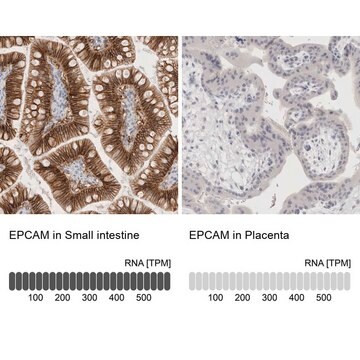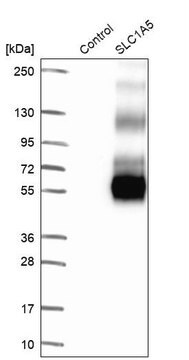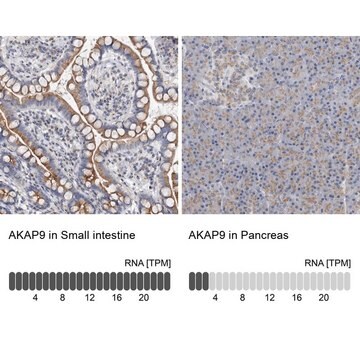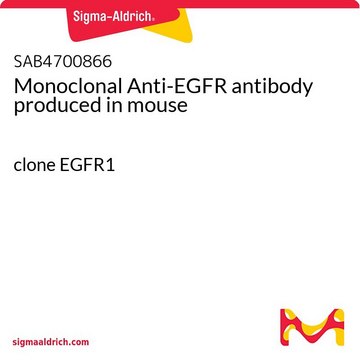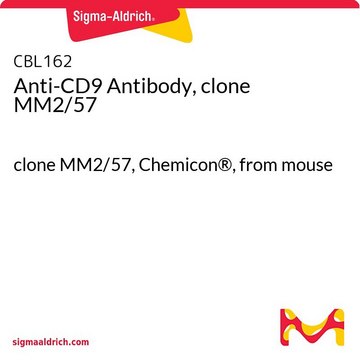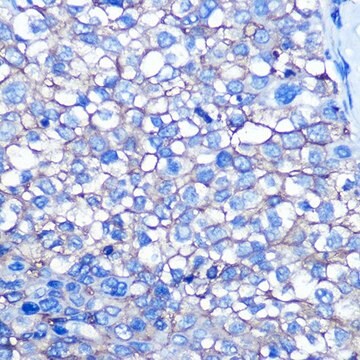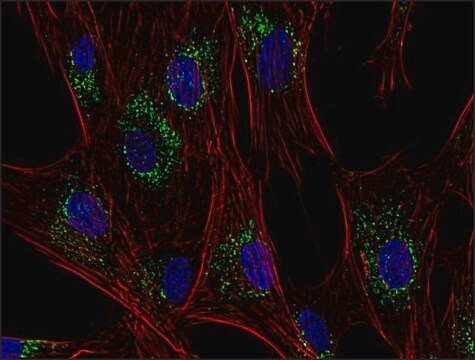SAB4200473
Anti-EpCAM ICD antibody, Mouse monoclonal
clone 4A7, purified from hybridoma cell culture
동의어(들):
Monoclonal Anti-DIAR5, Monoclonal Anti-EGP-2, Monoclonal Anti-EGP314, Monoclonal Anti-EGP40, Monoclonal Anti-ESA, Monoclonal Anti-EpCAM ICD antibody produced in mouse, Monoclonal Anti-HNPCC8, Monoclonal Anti-KS1/4, Monoclonal Anti-KSA, Monoclonal Anti-M4S1, Monoclonal Anti-MIC18, Monoclonal Anti-MK-1, Monoclonal Anti-TACSTD1, Monoclonal Anti-TROP1, Monoclonal Anti-epithelial cell adhesion molecule
About This Item
추천 제품
생물학적 소스
mouse
Quality Level
결합
unconjugated
항체 형태
purified from hybridoma cell culture
항체 생산 유형
primary antibodies
클론
4A7, monoclonal
양식
buffered aqueous solution
분자량
antigen ~40 kDa
종 반응성
human, mouse
농도
~1.0 mg/mL
기술
indirect immunofluorescence: 5-10 μg/mL using human MCF7 cells.
western blot: 0.25-0.5 μg/mL using whole extracts of human SW480 cells.
동형
IgG1
UniProt 수납 번호
배송 상태
dry ice
저장 온도
−20°C
타겟 번역 후 변형
unmodified
유전자 정보
human ... EPCAM(4072)
mouse ... Epcam(17075)
일반 설명
면역원
애플리케이션
- immunoblotting
- immunoprecipitation
- immunofluorescence
생화학적/생리학적 작용
물리적 형태
면책조항
적합한 제품을 찾을 수 없으신가요?
당사의 제품 선택기 도구.을(를) 시도해 보세요.
Storage Class Code
10 - Combustible liquids
WGK
WGK 2
Flash Point (°F)
Not applicable
Flash Point (°C)
Not applicable
가장 최신 버전 중 하나를 선택하세요:
Global Trade Item Number
| SKU | GTIN |
|---|---|
| SAB4200473-200UL | 4061837875595 |
자사의 과학자팀은 생명 과학, 재료 과학, 화학 합성, 크로마토그래피, 분석 및 기타 많은 영역을 포함한 모든 과학 분야에 경험이 있습니다..
고객지원팀으로 연락바랍니다.